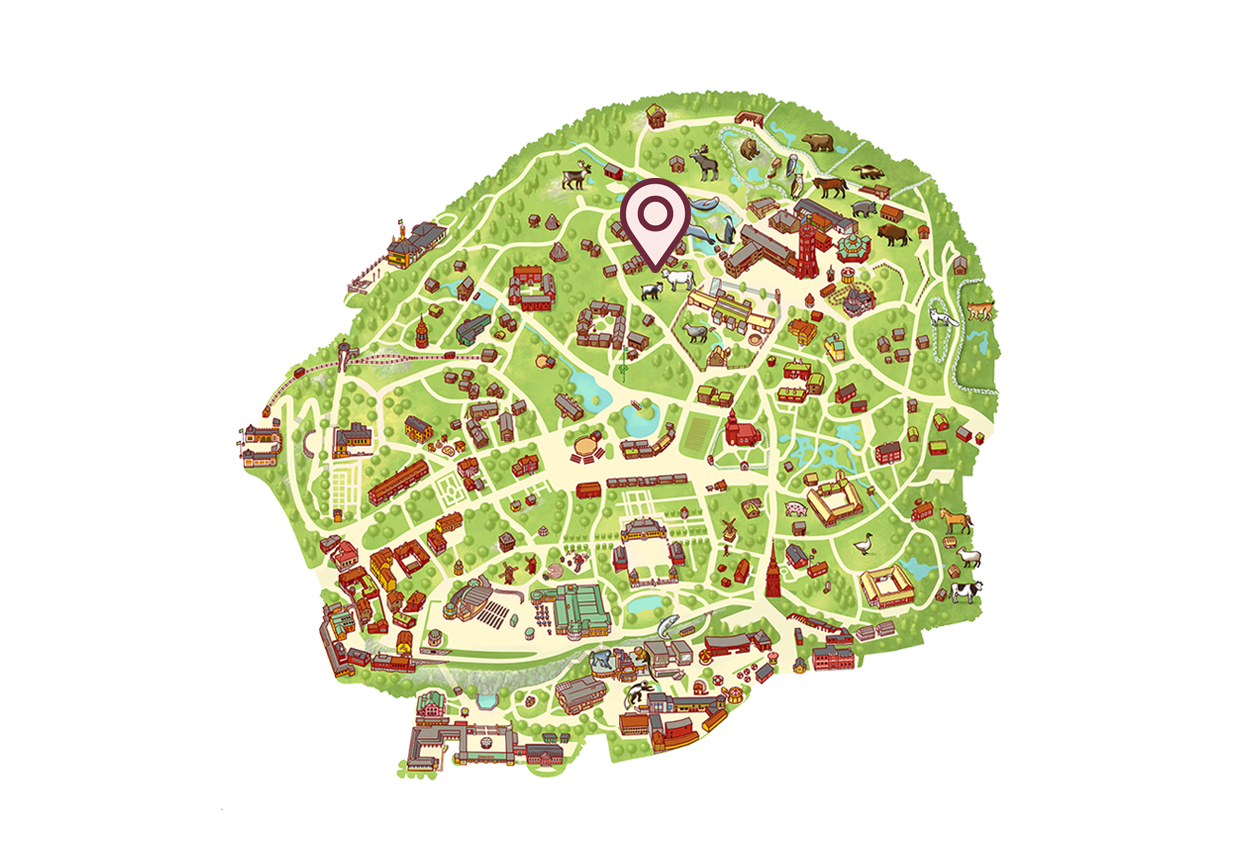- Swedish mountain cattle
Swedish mountain cattle
Swedish mountain cattle were bred at farms in northern Sweden, and are a good example of a native breed that has adapted to the cold Swedish climate over a long period of time. They are hardy and affectionate, and can survive on poor soil.
-
Small and hornless
The Swedish mountain cattle is small and hornless, but despite its relatively small size and feed requirements it makes for a good dairy cow. It is usually white in colour, with black, pale red, grey or greyish-brown spots, patches, fields or sides. Single-coloured cows sometimes occur, but are uncommon. -
About the Swedish mountain cattle
Scientific name:Bos taurus
Order:Even-toed ungulates (Artiodactyla)
Familly:Hollow-horned animals, domesticated animals (Bovidae)
Weight:Bull 450 kg, cow 250-350 kg
Height at the withers:130 cm
Sexual maturity:1-1,5 years
Breeding season:All year round, but usually in the autumn
Gestation:9 months
Number of young:1-2
Lifespan:15-20 years
Eats:plants
Number in Sweden:approx 140
-
The Swedish mountain cattle originates from northern Swedish rural cows. In a few isolated places, including Härjedalen, groups of cows have been found that have lived in isolation for many generations. They therefore still have the same appearance and characteristics as before. These are hardy cows that are easy to care for, healthy and a good example of a landrace that has adapted to its extreme environment.
Adapted to long winters
In the past, Swedish mountain cattle had to be stall-fed on small amounts of feed for eight months. In the summer, they were herded to the mountain pastures for grazing. During the short summer, they were able to use the protein-rich summer pasture to store fat. The Swedish mountain cattle learnt to survive on small amounts of lean feed but still give milk. Another characteristic of the Swedish mountain cattle is that it finds its way home easily.Swedish Mountain cattle are gentle animals, but can become extremely angry when defending themselves against wolves and other predators. While other animals such as elks and horses flee at the smell of a bear or a wolf, the cow attacks with a bellowing cry.
Cattle in the past
The cattle breeds that exist today have their origins in the European/Asian aurochs (Bos primigenus), which became extinct in the 17th century. The aurochs had a wide geographical distribution and also existed in Sweden. They were extremely large, with a height at the withers of up to two metres for bulls.Cattle probably came to Sweden with the first agricultural farmers. Cattle have long been an important domesticated animal, providing milk for making butter and cheese, but they were also used to pull loads until they were replaced by horses. Their meat was also valuable to households.
-
Native breeds
Native breeds are populations of domesticated animals that have lived for so long in the same area that they have adapted according to the local environment and its specific conditions. Swedish native breeds have declined in number, but there is a growing focus on efforts to preserve them as they are an important genetic resource and part of our cultural heritage.
Here you can find the Swedish mountain cattle
